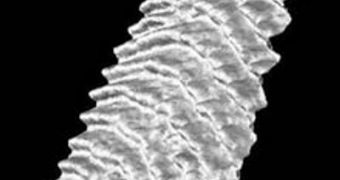Fingerprints have been one of authorities' preferred methods of creating indexes to include all sorts of bad guys, although that trend went downhill when innocent people started being fingerprinted at airports. Until now, this has been done by dipping people's fingers in ink, and then pressing them against a cardboard. Later on, optical scanners became available, and everything started running smoother. Now, experts propose the introduction of 3D fingerprinting devices, able to collect the data they need by simply shining a beam of light on fingers, Technology Review reports.
According to the developers of the new technology, shining patterns of light on fingertips, and then analyzing the ensuing image is a far more effective method of detecting all the grooves in the fingertips, than either ink or scanners. Additionally, the number of incorrect matches could be significantly reduced, the experts say. “Fingerprinting has been widely applied to identify criminals in forensic law enforcement and security applications,” University of Kentucky PhD candidate Yongchang Wang, the lead author of the paper detailing the new fingerprinting technique, explains.
Using existing methods can take up to several minutes, considering that several attempts have to be made on each finger, until a usable fingerprint can be obtained. This simply cannot work in a customs environment, where the agents have an average of 32 seconds to allot to each individual. The new system was licensed for production to Richardson, Texas-based FlashScan3D. The company's Chief Executive Officer, Mike Troy, explains that the fingerprinting devices work on a principle known as structured light illumination (SLI).
The new devices project a series of stripped lines onto the finger, and use a 1.4-megapixel camera to snap photos of the tip, at a resolution of 1,000 pixels per inch. A virtual, 3D model of the prints is then reconstructed, and the entire process takes 20 to 30 seconds to complete. The new technology is unhindered by warm or cold weather, dry atmospheric conditions or oily skins, like other methods are. “So, even at the same resolution, the non-contact 3-D print will have a much better performance in matching than traditional 2-D,” Wang concludes.

 14 DAY TRIAL //
14 DAY TRIAL //